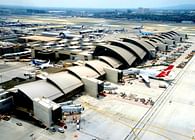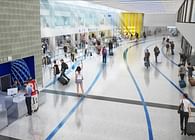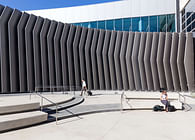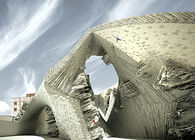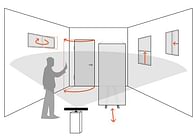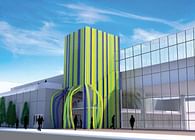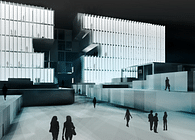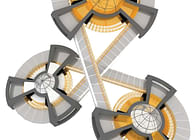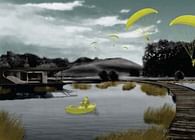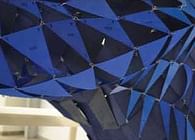
Oblique-atory: Helicoid Tessellations as Urban Space
Presented at CAADRIA 2014 Conference in Kyoto, Japan, May 2014.
Typical horizontal building types, open spaces, and human activities have yet to competently overcome or adapt to the constraints of vertically-oriented dense urban environments. Designing the built environment to the oblique, or more than two axes at once, is a required strategy for the future of city planning, the advancement of body-space interaction in architecture, and to reinforce the interconnectedness of the natural environment with human activities. With the development and increasing use of 3D modeling software, parametric and generative design processes, and the progressive investigation of complex geometry, it is likely that the oblique will be envisioned more and more as a functional architectural device. This research investigates the tessellation of minimal surface geometry to achieve a folded, multi-use surface capable of connecting disparate urban program and which can enable a city to offer amenities that are typically available in horizontally-oriented suburbs. The geometric family of the helicoid is found as the optimal formal generator because of its ability to create a continuous surface while allowing for both horizontal and vertical circulation.
Status: Competition Entry
My Role: Peer-reviewed research paper, author.


